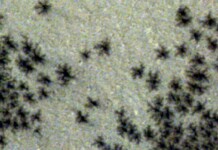
Researchers have discovered 12,000-year-old miniature flutes that may have been used for mimicking raptor calls.
The precise motive of the mimicry is unknown. It could have had religious connotations or been part of some form of hunting strategy.
Although the prehistoric site of Eynan-Mallaha in northern Israel has been thoroughly examined since 1955, it still holds some surprises, say scientists who found the collection of seven instruments there.
The Natufians, the Near Eastern civilization that occupied a village on the site between 13,000 and 9,700 BCe, are thought to have used them for hunting, music or to communicate with the birds themselves.
“The village, located on the shores of Lake Hula, was home to this civilization throughout its 3,000 years of existence,” the study read.
MORE FROM PREHISTORY: ‘Most Important Prehistoric Discovery in a Century’ Revealed by British Museum
“It is therefore of vital importance in revealing the practices and habits of a culture at the crossroads between mobile and sedentary lifestyles, and the transition from a predatory economy to agriculture.”
The study published on the finding of these aerophones details they’re the first ever to be discovered in the Near East. Aerophones are a class of musical instruments in which a vibrating mass of air produces the initial sound.
They are made from the bones of a small waterfowl, with the smallest one being just 5 millimeters, and produce a sound similar to certain birds of prey, such as the Eurasian sparrowhawk and common kestrel, when air is blown into them.
MORE PREHISTORIC FINDS: Evidence of Amputation in Prehistoric Times Shows Patient Surviving for a Decade–Proves Medical Expertise Existed
Smaller bones would have been deliberately selected in order to obtain the high-pitched sound needed to imitate particular raptors.
“The choice of bones used to make these instruments was no accident—larger birds, with bigger bones that produce deeper sounds, have also been found at the site,” the study authors continue. “Indeed, it is clear that the Natufians attributed birds with a special symbolic value, as attested by the many ornaments made of talons found at Eynan-Mallaha.”
SHARE This Unique Moment In Musical History…




















